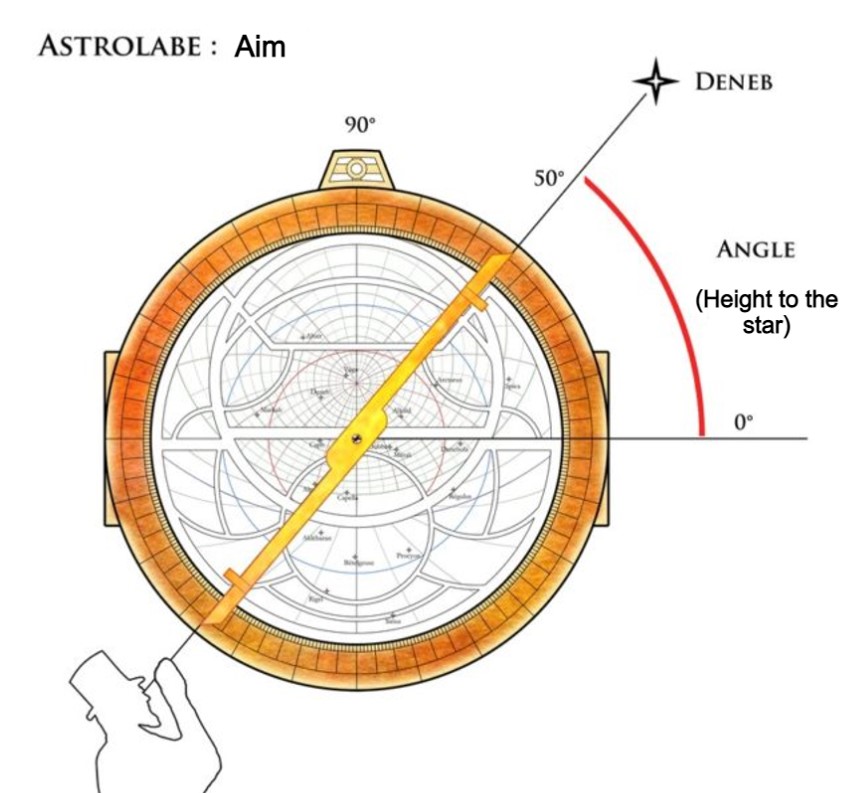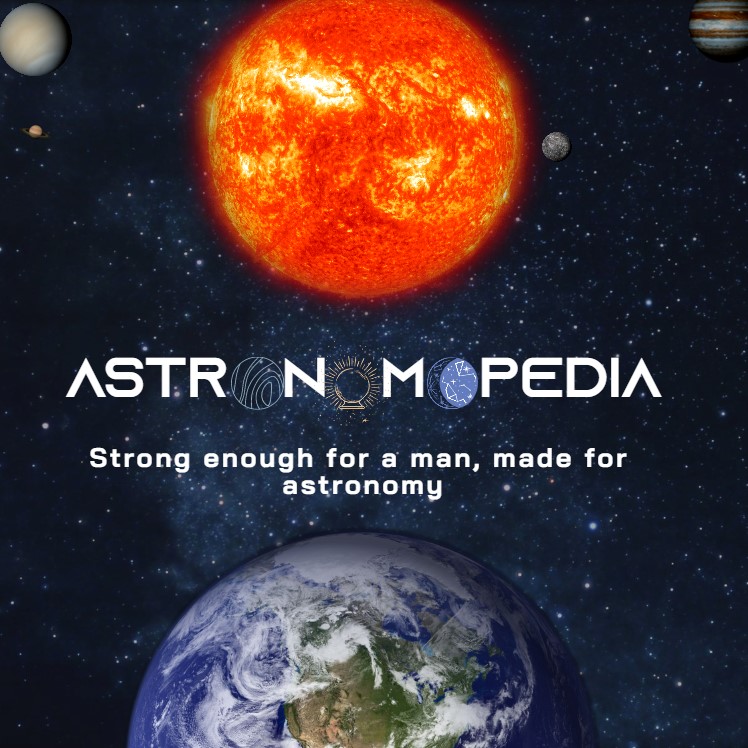

Astrolabe
What is an Astrolabe?
Astrolabes are versatile astronomical instruments used for observation and analog calculations. These instruments serve various purposes, such as determining the time of observation and pinpointing the directions of celestial objects, especially stars. Primarily invented by the ancient Greeks in 225 BCE, the astrolabe has a long history of usage in various cultures. It continued to be employed for centuries until the 18th century. During this period, the astrolabe played a crucial role in astronomy, navigation, and scientific endeavors. Eventually, it was replaced by the sextant in navigation applications.
What is special about this astronomical instrument?
The astrolabe held remarkable significance beyond its astronomical applications. This instrument not only facilitated the determination of stars' locations, directions, times, and dimensions, but it also played a vital role in the Islamic religion. Within Islamic practices, the astrolabe held a central role in determining astronomically defined prayer times and establishing the direction towards Mecca, the holiest city in Islam. Additionally, the astrolabe's versatile applications encompassed navigation, trade facilitation, and support for military strategies.
Morphology
Dimensions
The astrolabe manifested in three distinct types: the mariner's astrolabe, quadrant astrolabe, and planispheric astrolabe. Each type varies not only from the others but also within itself, encompassing variations like the spherical, equatorial, or universal plane. Correspondingly, the diverse types of astrolabes possess their own unique dimensions, contributing to their specific functions and applications. A regular or typical astrolabe, for instance, measures about 15 cm (6 inches) in diameter, rendering it a conveniently portable instrument that could be readily attached to one's clothing for personal use.
Physico-chemical properties
A mariner's astrolabe, usually fashioned from brass due to its resistance to rust and durability, carried a considerable weight. This choice of material was influenced not only by its sturdiness but also its higher cost compared to iron, which was used in land-based astrolabes. This preference for brass in mariner's astrolabes could be attributed to their greater need for a durable and reliable instrument in maritime environments.

Anatomy
The astrolabe is comprised of five main components: the mater (meaning "mother" in Latin), the plate, the rete, the rule, and the alidade.
The central body of the astrolabe is known as the mater, while the limb, engraved with a degree scale and a scale of hours, frames the edge of the mater. The hollowed-out part of the mater contains the latitude plates.
Through the application of a mathematical technique called stereographic projection, the plate of an astrolabe is used to map the celestial sphere. This technique allows the representation of the 3-dimensional sphere on a 2-dimensional surface. Since different latitudes require unique projections, astrolabes often feature various plates, stacked atop each other within the instrument.
The rete, a cutout plate with an ecliptic ring and movable star pointers, can be rotated over the latitude plates. Star pointers on the rete indicate specific stars, often marked on the plate. The ecliptic ring represents the annual path of the Sun in the sky as observed from Earth.
A rotatable bar known as the rule is located on the front of the astrolabe. The rule serves to identify positions on the plate or rete and correlate them with the hour marks on the limb.
On the back of the astrolabe, another rotating bar called the alidade is found. In contrast to the rule, the alidade features small vanes with slots or pinholes at each end, serving as sights. Altitude can be measured by aligning an object, such as a star, between the two sighting holes and reading off the degree of altitude on a scale encircling the edge of the hole.
Utilisation

To gauge the Sun's position using an astrolabe, follow these steps:
1. Vertical Orientation: Hold the astrolabe in a vertical position. Many astrolabes come with a loop that enables attachment to a strap or rope, allowing the instrument to hang vertically by gravity.
2. Align with Alidade: Adjust the alidade to align with the Sun. To prevent direct Sun viewing, rely on the shadow cast by the alidade. The shadow's narrowest point signifies proper alignment. Some astrolabes feature pinholes in the alidade, which permit a small dot of light through when aligned.
3. Angle Measurement: Read the angle indicated by the alidade against the ring on the back of the astrolabe.
4. Verify Online: Double-check your measurement accuracy online.
This procedure can also be employed to determine the positions of stars or the Moon with the astrolabe, and in these cases, it is safe to directly sight the star by looking along the alidade.
Know the time with the astrolabe:
1. Measure the Sun's Angle: Utilize the provided guide to measure the angle of the Sun.
2. Align for Date: Hold the astrolabe with its front side facing up, and adjust the ruler to align with the current date marked on the ecliptic ring.
3. Altitude Line Alignment: Correspond the lines on the plate with altitude levels; select the altitude line that matches the Sun's angle you measured (approximation might be required depending on your astrolabe's resolution).
4. Rete and Rule Alignment: Rotate both the rete and rule together so that the point where the rule intersects the ecliptic circle also intersects with the chosen altitude line.
5. Time Reading: Observe the direction indicated by the ruler and read off the corresponding time.
History

Invented by the ancient Greeks around 225 BCE, with Apollonius drawing on the theories and findings of Hipparchus, the astrolabe served as a pioneering creation. Its primary functions encompassed timekeeping, aiding in identifying sunrise, sunset, and day length, as well as facilitating the pinpointing of celestial objects in the sky. Over the centuries, the astrolabe's utility evolved, finding its way to Islamic Spain during the early 12th century, when its journey into Europe commenced, ultimately adapting to the requirements of oceanic navigation. This journey was accompanied by the astrolabe's remarkable role in Islamic civilization, where its multifaceted abilities held significance in determining prayer times, locating the Qibla towards Mecca, and contributing to navigation, trade, and warfare. Arab innovation and advancements further transformed the astrolabe's use, resulting in the development of three new types: the linear, the universal, and the geared astrolabes.
In the 8th century, the distinguished Arab scientist and mathematician Muhammad ibn Ibrahim al-Fazari constructed an astrolabe, and it was Arab astronomer Al-Battani who laid the mathematical foundation for these instruments. The Arab scientist Abd Al-Rahman Al-Sufi penned an extensive work detailing 1000 uses of astrolabes in everyday life and astronomical problem-solving. By the 11th century, Andalusian astronomer Al-Zarqali reinvented the universal astrolabe, crafting a tool that was no longer constrained by user altitude and could be utilized worldwide. Arab women also made notable contributions; in the 12th century, Mariam Al-Ijliya (Al-Astrolabya), a prominent figure from a family of engineers and scientists in Aleppo, made significant improvements to astrolabes.
Arabs introduced the astrolabe to Europe via Andalusia in the 11th century, transferring the knowledge of Muslim scientists. This influence had a profound impact on astronomy studies in Medieval Europe, fostering progress that would contribute to the foundation of modern science.
Author: William Homier
Editor: William Homier
This page was last edited on 24 August 2023, at 12:14 (HAE).
Sources:

